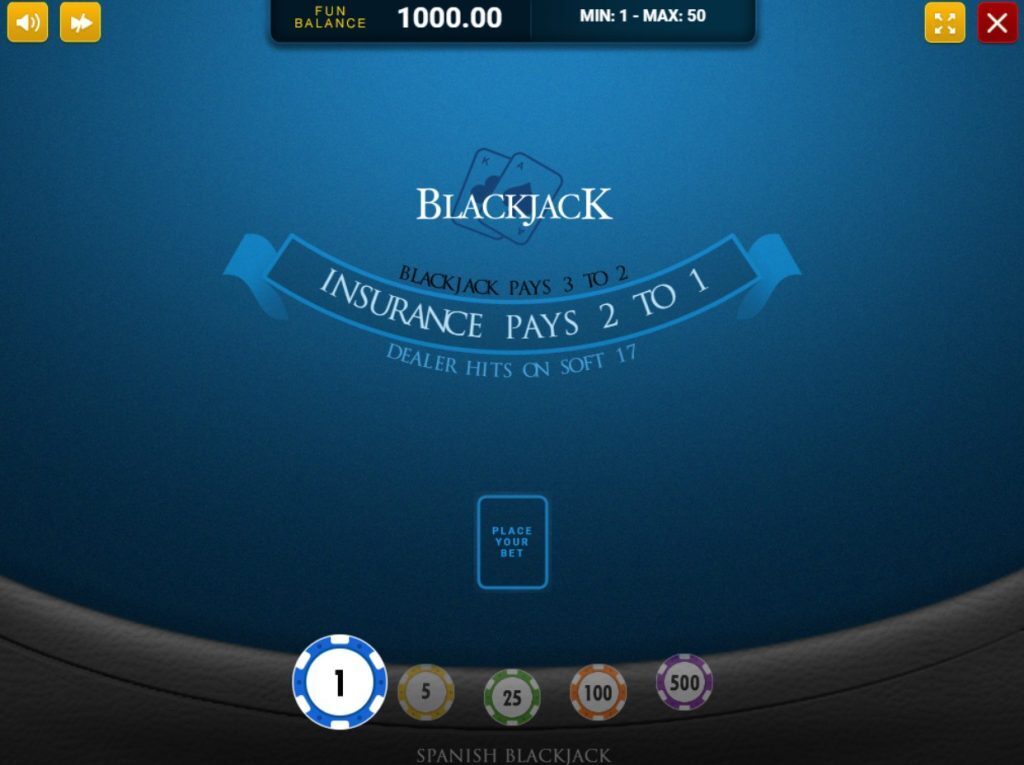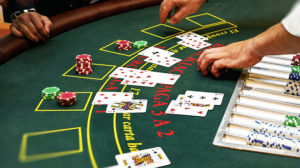Spanish 21 vs Blackjack: Which Game Offers Better Odds?
When I first encountered Spanish 21 at a Las Vegas casino fifteen years ago, I was immediately intrigued by the familiar yet different gameplay. The dealer explained it was “like blackjack, but with better bonuses,” which sounded too good to be true. After years of playing both games and analyzing their mechanics, I’ve learned that while Spanish 21 offers exciting bonus payouts, the comparison isn’t quite that simple.
Both games share the fundamental goal of beating the dealer without going over 21, but their differences in deck composition, rules, and payouts create distinct strategic considerations. Understanding these differences is crucial for making informed decisions about which game to play and how to adjust your strategy accordingly.
What is Spanish 21?
Spanish 21 is a blackjack variant that uses a modified deck structure and offers enhanced bonus payouts for specific hands. Despite its name, the game was actually developed in the United States and has become increasingly popular in casinos worldwide.
The most significant difference from traditional blackjack is the deck composition. Spanish 21 uses a “Spanish deck” where all four 10-value cards (the actual 10s, not the face cards) are removed from each deck. This means each deck contains only 48 cards instead of the standard 52, fundamentally altering the game’s mathematics and optimal strategy.

Spanish 21 compensates for the removed 10s with player-friendly rules and bonus payouts that don’t exist in traditional blackjack. Players can double down on any number of cards, surrender after doubling (known as “double down rescue”), and always win with a 21 regardless of the dealer’s hand.
The bonus structure rewards specific combinations like 6-7-8 or 7-7-7 in mixed suits, with even higher payouts for suited versions. A five-card 21 pays 3:2, six-card 21 pays 2:1, and seven or more cards totaling 21 pays 3:1. These bonuses create exciting moments that can significantly boost your bankroll when they hit.
Traditional Blackjack Fundamentals
Traditional blackjack uses standard 52-card decks with all cards present, creating the mathematical foundation that has made it one of the most analyzed casino games. The basic premise remains beating the dealer’s hand without exceeding 21, but the strategic depth comes from the consistent deck composition.
In standard blackjack, the abundance of 10-value cards (16 per deck) creates favorable situations for both hitting and standing decisions. This 10-rich environment makes basic strategy more straightforward and allows for effective card counting systems that can give skilled players a mathematical edge.
Most blackjack games follow similar core rules: dealer stands on all 17s, blackjack pays 3:2, and players can double down on their first two cards. Some variations allow doubling after splitting or surrendering, but these rules vary by casino and table.
The house edge in traditional blackjack typically ranges from 0.28% to 0.60% when playing with basic strategy, depending on the specific rules in play. This low house edge, combined with the game’s strategic depth, has made blackjack a favorite among serious gamblers for decades.
Deck Composition: The Critical Difference
The removal of 10s from Spanish 21 creates a cascade of mathematical changes that affect every aspect of gameplay. With only 12 ten-value cards per deck instead of 16, the probability of making strong hands decreases while the likelihood of busting increases.
This change particularly impacts doubling decisions, as you’re less likely to receive a 10 when doubling down on 11. Similarly, the dealer busts less frequently, making marginal standing decisions more complex. I’ve noticed that hands I would confidently stand on in blackjack sometimes require hitting in Spanish 21.
The altered deck composition changes the relative value of remaining cards. Aces become more valuable as insurance against busting, while small cards (2-6) gain importance for building hands without the safety net of abundant 10s. Face cards maintain their value but become relatively more precious.
These changes require significant strategy adjustments. Basic strategy charts for Spanish 21 differ substantially from blackjack, particularly in doubling and hitting decisions. Using blackjack strategy in Spanish 21 would increase the house edge considerably.
Rule Variations and Player Options
Spanish 21 offers several player-friendly rules that partially offset the disadvantage of removed 10s. The ability to surrender after doubling (double down rescue) provides an escape route when your doubled hand looks hopeless against a strong dealer upcard.
Late surrender is typically allowed on any hand, and some casinos offer early surrender against dealer ace or 10. The ability to double down on any number of cards creates opportunities to press advantages that don’t exist in traditional blackjack.
Spanish 21 generally allows more liberal splitting rules than blackjack. You can usually re-split aces and draw multiple cards to split aces, options rarely available in traditional blackjack. Some casinos allow splitting unlike 10-value cards (splitting a Jack and Queen, for example).
These enhanced splitting options create more complex decisions but also more opportunities to capitalize on favorable situations. I’ve found that proper splitting strategy in Spanish 21 requires more nuanced thinking than the relatively straightforward blackjack splitting charts.
Bonus Payouts and Special Hands
Beyond the standard 3:2 blackjack payout, Spanish 21 rewards various combinations with enhanced payouts that can significantly impact your session results.
Five-card hands totaling 21 pay 3:2, while six-card 21s pay 2:1. Seven or more cards totaling 21 pay 3:1, creating dramatic moments when you’re building a large hand. The 6-7-8 and 7-7-7 combinations offer substantial bonuses, with suited versions paying even more.
The most exciting bonus in Spanish 21 is the Super Bonus, which pays when you have 7-7-7 in spades while the dealer shows a 7 of spades. This rare combination typically pays $1,000 for bets of $5-$24 and $5,000 for bets of $25 or more, though the exact amounts vary by casino.
While these bonuses occur infrequently, they add volatility and excitement to the game. I’ve witnessed players hit these bonuses, and the celebration is always memorable. However, it’s important to remember that bonus frequency doesn’t offset the mathematical disadvantage of the altered deck.
House Edge Comparison
The house edge comparison between Spanish 21 and blackjack reveals the mathematical reality behind the games’ different structures. Traditional blackjack with favorable rules typically offers a house edge between 0.28% and 0.60% for basic strategy players.

Spanish 21’s house edge generally ranges from 0.37% to 0.82%, depending on the specific rules and bonus structure. While this is higher than optimal blackjack games, it’s still quite reasonable compared to most casino games. The difference becomes more pronounced over extended play sessions.
Several factors influence the house edge in both games. In blackjack, rules like dealer hitting soft 17, doubling restrictions, and blackjack payout ratios significantly impact the mathematical advantage. Spanish 21’s house edge varies based on bonus payouts, surrender options, and splitting rules.
The key insight is that while Spanish 21 offers more excitement through bonuses and flexible rules, these advantages don’t fully compensate for the removed 10s. However, the difference is small enough that recreational players might prefer Spanish 21’s enhanced entertainment value.
Strategy Differences
Playing Spanish 21 with blackjack strategy is a costly mistake that I’ve seen many players make. The altered deck composition requires significant strategy adjustments, particularly in borderline situations where the missing 10s change the optimal decision.
Basic strategy for Spanish 21 involves hitting more frequently than in regular blackjack, especially with totals of 12-16 against dealer upcards. The reduced likelihood of busting (due to fewer 10s) makes aggressive play more mathematically sound.
Doubling strategy in Spanish 21 requires careful consideration of the reduced 10-count. While you should still double 11 against most dealer upcards, the margins are smaller. Soft doubling becomes less attractive, and some traditionally strong doubling situations become marginal.
I’ve learned to be more conservative with doubling in Spanish 21, particularly against strong dealer upcards. The double down rescue option provides some safety, but it’s better to avoid marginal doubles entirely than rely on this escape route.
The liberal splitting rules in Spanish 21 create opportunities but also require disciplined bankroll management. With the ability to re-split multiple times and draw to split aces, a single hand can quickly become expensive.
Proper splitting strategy considers both the mathematical advantage and the potential cost. While the rules are player-friendly, the altered deck composition affects the profitability of various splits compared to traditional blackjack.
Which Game Should You Choose?
The choice between Spanish 21 and blackjack depends on your priorities as a player. If you’re focused purely on mathematical optimization and lowest house edge, traditional blackjack with favorable rules is the clear choice.

However, if you value entertainment, bonus excitement, and rule flexibility, Spanish 21 offers a compelling alternative. The slightly higher house edge may be worth paying for the enhanced gaming experience, especially for recreational players.
Serious advantage players and card counters should generally stick with traditional blackjack, where proven systems can overcome the house edge. The altered deck composition in Spanish 21 makes traditional counting systems less effective.
Recreational players seeking entertainment value might prefer Spanish 21’s bonus structure and rule flexibility. The game offers more decision points and exciting moments, even if the mathematical edge is slightly worse.
Final Recommendations
After years of playing both games, I believe the choice comes down to personal preference and playing style. Spanish 21 offers legitimate entertainment value with its bonuses and flexible rules, while traditional blackjack provides the lowest house edge for skilled players.
For most recreational players, the difference in house edge is less important than enjoying the gaming experience. Spanish 21’s enhanced rules and bonus opportunities create a more dynamic game that many players find more engaging than traditional blackjack.
If you’re new to either game, I recommend learning basic strategy thoroughly before playing for significant stakes. Both games reward proper strategy and punish poor decisions, making education your most valuable investment regardless of which variant you choose.
The key is understanding what each game offers and making an informed choice based on your goals, bankroll, and preferences. Both Spanish 21 and blackjack can provide enjoyable gaming experiences when approached with proper knowledge and realistic expectations.




